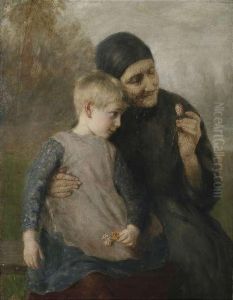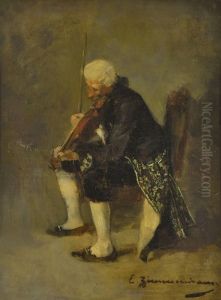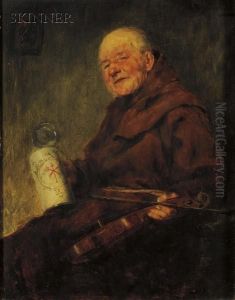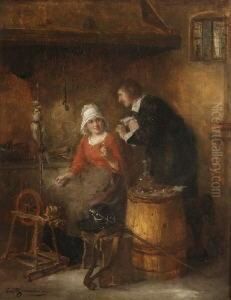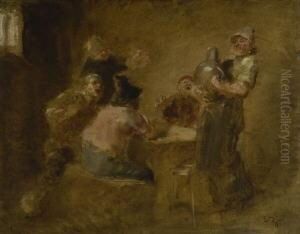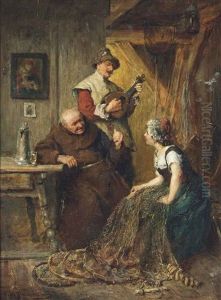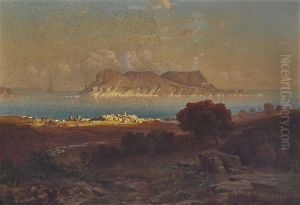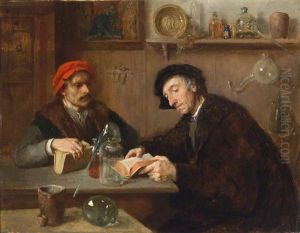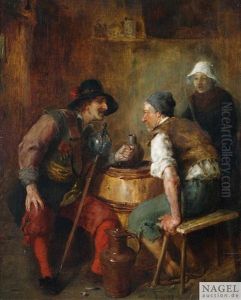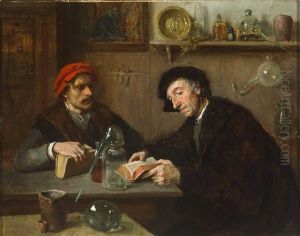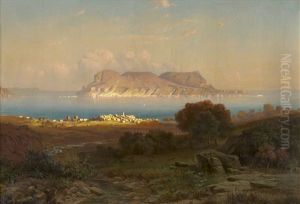Ernst Karl Georg Zimmermann Paintings
Ernst Karl Georg Zimmermann was a German painter born on August 1, 1852, in Munich. He is primarily known for his work as a genre painter, and his paintings often depicted scenes of everyday life with a particular focus on the depiction of light and shadow, which he executed with great skill.
Zimmermann studied at the Academy of Fine Arts Munich, which was a leading art institution in Germany at the time. He was a student of the celebrated artist Wilhelm von Diez, who was known for his genre paintings and influence on younger German artists. Under Diez's tutelage, Zimmermann honed his technical abilities and developed a keen eye for detail.
Throughout his career, Zimmermann exhibited a strong affinity for the Munich School style of painting, which was characterized by dark tones, a realistic approach to subjects, and often a sense of Romantic nostalgia. His works displayed a technical precision and a careful attention to the interplay of light and shadow, which became trademarks of his style.
Zimmermann's paintings were well-received, and he enjoyed success during his lifetime. His works were exhibited in various art shows, and he gained recognition among art collectors and patrons. Despite the popularity of his genre scenes, Zimmermann's oeuvre also included portraits, landscapes, and historical paintings, showcasing his versatility as an artist.
Tragically, Ernst Zimmermann's life and career were cut short when he died unexpectedly on February 6, 1901, in Munich. Although his life was brief, his contributions to the Munich School and genre painting left a lasting impression on the German art scene of the late 19th century. Today, his works can be found in various art collections and museums, remembered for their meticulous detail and evocative use of light.




